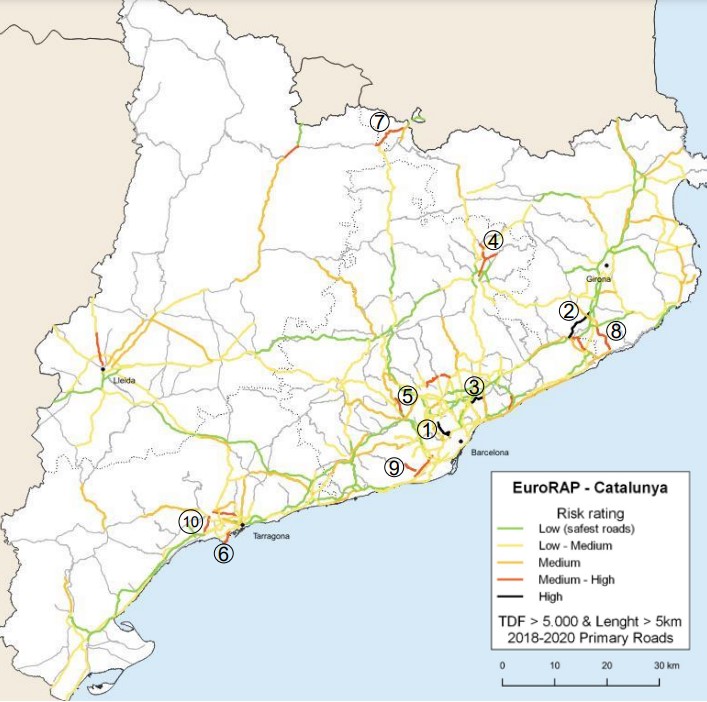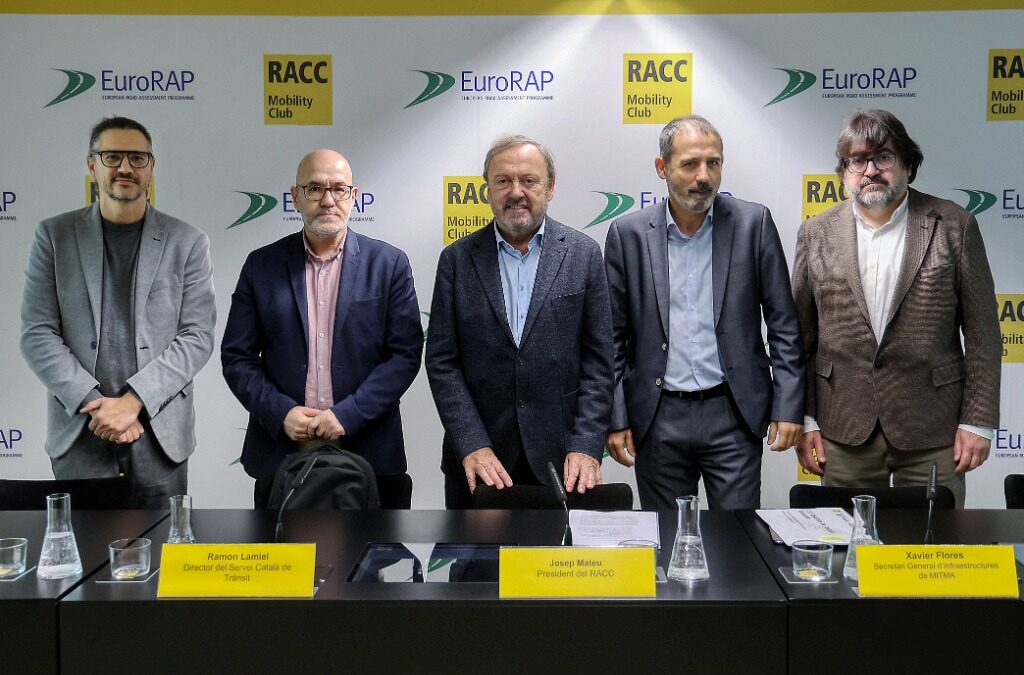The Reial Automobil Club de Catalunya (RACC) has presented the 21st edition of its annual road assessment study, analysing for yet another year, the crash rate on the Catalan road network of Spain.
Annual performance tracking has been underway in Catalonia since 2002. In this edition, 6,373 km of interurban highways owned by the state, private sector and councils have been analysed, representing 92% of road mobility in Catalonia.
The assessment has found with the recovery of mobility, the number of fatalities and serious injuries rises, but without returning to pre-pandemic levels.
The RACC and other European clubs members of the International Automobile Federation (FIA) use the iRAP methodology within the EuroRAP Road Assessment Programme to analyse the risk of crashes on roads with the aim of improving road safety.
The methodology compares the number of serious crashes and fatalities that have occurred in the last three years on a section of road with the volume of vehicles that circulate on it (in terms of average daily traffic intensity, IMD).
Undertaken with the collaboration of the Servei Català de Trànsit, the Department of Territory of the Generalitat de Catalunya and the Diputació de Barcelona, the assessment found:
Key findings and conclusions
- In Catalonia, the severity of crashes has been reduced in the last two decades in terms of fatalities, which in the year 2,000 almost reached 700 and in the last recorded year stood at 157.
- The European Union has established the goal of halving fatalities by 2030 compared to 2020. In the previous 10 years, deaths on the Catalan road network have been reduced by more than 50%: in 2010, 266 people died in traffic crashes while, in 2020, there were 123 fatalities, according to data from the Servei Català de Trànsit. This success has only been apparent, since it is the result of reduced mobility due to the COVID-19 pandemic. When mobility has recovered, the number of fatalities has increased again, but without reaching 2019 levels.
- For the network analysed (which represents 53% of the total network and 92% of road mobility in Catalonia), 75% of crashes with deaths and serious injuries take place on roads.
- In the 2019-2021 triennium, serious and fatal crashes have decreased by 8.7%. Global road mobility has decreased by 3.0%. These variations show the effects of COVID-19 in 2020 and the beginning of 2021 and cause the risk to have decreased by 6.1% in the overall network analysed.
- “High” and “very high” risk kilometres represent 25% of the network, four percentage points less than in the previous three-year period. In Barcelona, the number of kilometres with “high” and “very high” risk increased by 2 points, in Girona they fell 9 percentage points, in Lleida 6 and in Tarragona 5. Tarragona continues to be the demarcation with the lowest percentage of kilometres with “high” and “very high” risk (20%) and Lleida with more kilometres of high risk (28%)
- Conventional undivided highways (with a single lane in each direction) accumulate almost all of the sections with “very high”, “high” and “medium” risk. On the other hand, on divided roads (highways and motorways) practically all the sections are of “low” or “very low” risk.
- The risk of suffering a serious or fatal crash on an undivided road is 4 times higher than on a divided road.
- The BP-1417 road (L’Arrabassada) is once again the section with the highest danger index in Catalonia, due to the high rate of motorcycle crashes. In 88% of crashes with fatalities and serious injuries, at least one motorcycle is involved.
- This year, 608km have a risk equal to zero. Therefore, in 9.5% of the network analysed, no fatal or serious crashes have occurred in the last three years.
- For the seventh consecutive year, the section that accumulates the most serious crashes per kilometre (without taking into account the traffic that passes) is on the C-58 between Barcelona and Cerdanyola.
- The network is divided into 428 sections under study. In the 10 sections with the most crashes, there is a very high number of motorcycle and moped crashes: on average, 79% of the crashes with fatalities and serious injuries involved a motorcycle or moped. More than half of the fatalities were motorcyclists.
- During the three-year period analysed by this study, 45% of all traffic crashes with deaths and serious injuries involved at least one motorcycle or moped.
- 50% of serious and fatal motorcycle accidents are concentrated in 12.4% of the network’s length (789 km).
- The sections with the most bicycle accidents are all in the demarcation of Barcelona.
- The section with the highest concentration of heavy vehicle crashes is on the A 2, which once again tops the table with the most heavy vehicle crashes with four sections.

The need to improve road safety and, as a consequence, to reduce the crash rate is key in Catalonia and the rest of Europe.
Investment in infrastructure and the promotion of training and awareness campaigns aimed at drivers of all types of vehicles are essential to achieve these improvements.
For more information, contact Cristian Bardaji, Mobility Area Director, RACC by email cristian.bardaji@racc.es
Image credit: RACC


















